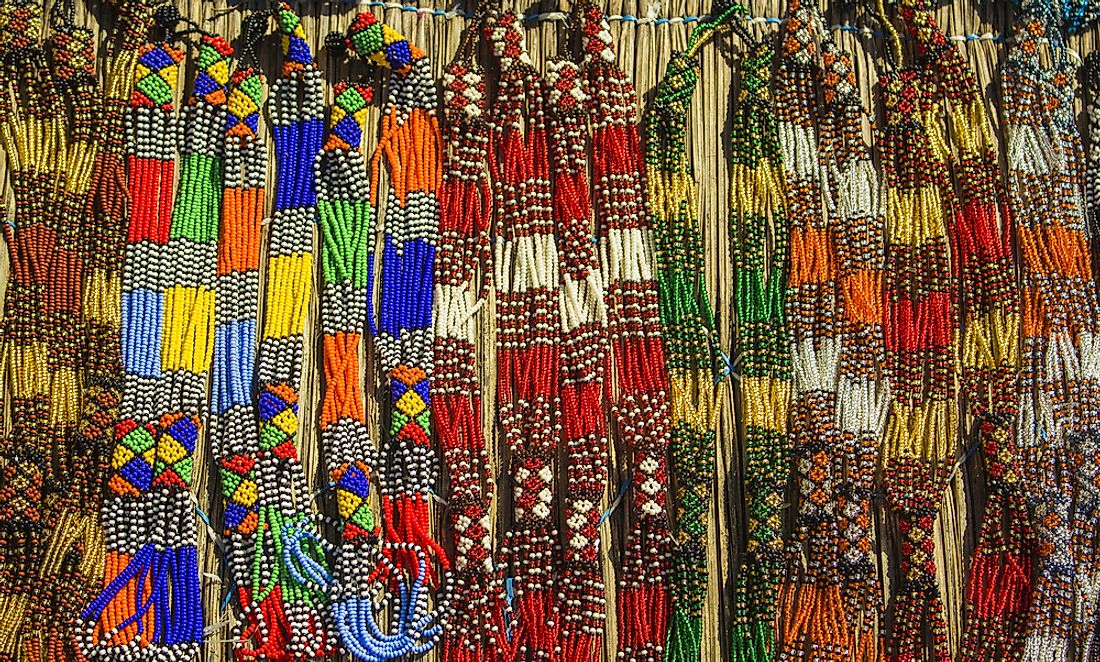The Culture of Zambia - Zambian Culture

The African nation of Zambia is located in the south-central part of the continent. The landlocked country has a population of about 16 million. The country’s population is youthful and it suffers from various issues like poverty, unemployment, diseases, and more. The Zambians are primarily Bantu-speaking people belonging to about 70 ethnic groups. According to the CIA World Factbook, some of the largest ethnic groups in the country include the Bemba, Tonga, Chewa, Lozi and Nsenga peoples who represent 21%, 13.6%, 7.4%, 5.7%, and 5.3% of Zambia’s population, respectively.
The majority of Zambians are Christians with 75.3% of the population adhering to the various Protestant denominations. Roman Catholics comprise about 20.2% of the population. Adherents of other religions and the non-believers make up the rest of the population.
Life In The Zambian Society
Although traditionally, the society in Zambia segregated the roles of men and women, such segregation is less pronounced in areas of the country today, especially in the urban areas.
Women in rural areas are generally assigned the tasks of managing the household and children and also work in the fields. Men are expected to do the fishing, hunting, and livestock management. Men usually have the final say in the family’s financial planning.
Traditionally, people of Zambia were never expected to marry outside their tribe or marry within their clan. Marriage customs vary from tribe to tribe. Generally, a mediator helps the groom’s family find a bride for the groom. The latter is expected to pay a dowry (traditionally in the form of livestock but today, money settlements are also expected) in exchange for the bride.
Since Christianity is the religion of the majority of Zambians, weddings are mostly in the traditional Christian style but often incorporates elements of indigenous customs and rituals.
Domestic units comprise of extended families with many generations living under the same roof. The issue of inheritance varies with the rules of the different clans and tribes. The clan is an important identity of the Zambians. Members of a clan are expected to stand by each other in times of need.
Families usually have a large number of children and the younger ones are usually taken care of by the older ones. Proper educational facilities are rare, especially in the rural areas of Zambia and hence a large section of the children is unable to attend school.
Most tribes have their own initiation ceremonies that mark an individual’s entry into adulthood. Such ceremonies are meant to teach the individual his/her responsibilities towards the family and society.
Greetings are considered to be very important in a Zambian society. One is expected to inquire about the health and well-being of another before coming to the point in conversations. Washing hands before a meal is considered to be the right etiquette. Using the right hand and not the left while greeting, exchanging money or eating is preferred. The use of proverbs is common in conversations. Respect for the elders is also an important aspect of Zambian culture.
Arts And Craft In Zambia
Traditional handicrafts of Zambia consist mainly of wood carving, basketry, pottery, etc. Some of the popular Zambian handicrafts include the Tonga baskets, wooden carvings, wire and copper crafts, mats, stools, etc. The country’s craft industry is mostly supported by tourists and several NGO’s.
Music And Dance In Zambia
Music and dance serve as important mediums of expression of thoughts and emotions in Zambia. The various ethnic groups have their distinct forms of music and dance which are an integral part of tribal rituals and other ceremonies of the people. Traditional music in Zambia is usually based on drums and other percussion instruments. It is generally accompanied by singing and dancing. Other musical instruments that are commonly used include flutes, horns, pipes, bells, the African piano, etc.
Foreign music genres are popular in the urban areas of Zambia. Some of the most popular genres include the Jamaican reggae, African-American music, and the Congolese rumba.
Clothing in Zambia
The style of traditional clothing varies from tribe to tribe. Generally, however, women usually wear loose dresses or long skirts and a blouse. Long trousers and loose fitting cotton shirts are preferred by most men. An important and concerning aspect is the rise in popularity of secondhand clothing in the country. Such clothing arrives from the Western countries and church organizations in the form of charity. The impact of such clothing has been both positive and negative. While the clothing comes from free or at very low cost and benefits the poverty-stricken Zambians, the domestic textile industry suffers due to it. Due to low demands, traditional textiles and crafts have become scarce. Secondhand clothing markets are flourishing in their place.
Sports In Zambia
Football is the most popular sport played in Zambia. It is also regarded as the country’s national sport. Often, the businesses come to a standstill and the streets become empty when people gather in front of the television to watch an important international football match. Other sports played in the country include boxing, volleyball, golf, athletics, etc. Western sports were introduced in the country during colonial times.











